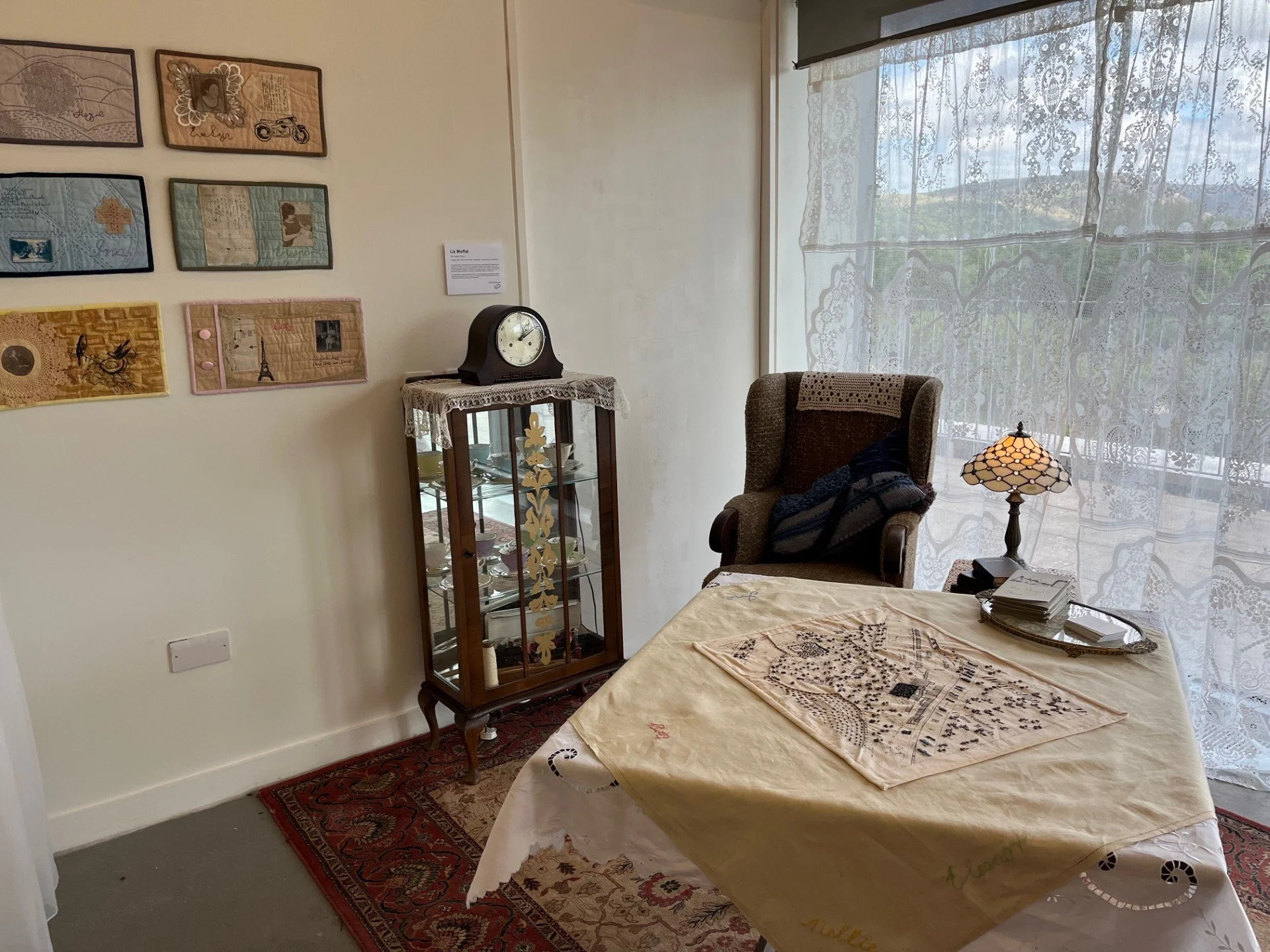The Angel’s Share
It all starts with research and from a found vintage tablecloth I began looking into the names embroidered there and started at Deanston Distillery which was once a cotton mill.
The title of my work comes from the evaporation of whisky into the air the longer that it is kept. I loved the idea of the Angel taking her share of the Deanston ladies leaving behind a rich legacy of work.
I like dyeing with natural substances and I want to pursue this more and try to develop more colours. The textile industry is so high in global pollution and synthetic dyes are a major contributing factor.
This fits in with my ethos of trying to use more eco-friendly and sustainable practices but I also really like the delicate colours that can be achieved with botanical dyes.
Avocado Dye produces a pink colour when the stones are soaked. Turmeric produces yellow. Onion produces a yellow orange shade and red onion is pink. Black tea and green tea produce varying colours from brown to beige. My favourite result was black bean which produces a beautiful lilac every time.
Screenprinting
The main piece of the artwork is a screenprinted map onto green tea dyed vintage fabric.
This was then embroidered onto, using a monotone palette.
Embroidery
I embroidered on the screenprinted map then linked the ladies to their homes using embroidery thread.
I created an Artist’s Book of the women’s lives using the colours of the signatures for each. Each page also had the coloured signature which was embroidered using free motion embroidery. Embroidery on top is achieved by putting embroidery thread on the bobbin and stitching on the reverse.
Putting the Artist Book together
I used quilting on the dyed pages, embroidered and then embellished them with characteristics from the ladies’ lives creating a visual social history. The research in the initial stages was vital to this.
I created a setting for my art work putting the ‘pages’ of the book on the wall and the map of Deanston on top of the embroidered vintage tablecloth.
The pages fit on top of Betty’s page and are attached by crochet loops. Once the exhibition comes down the book can be reassembled.




























